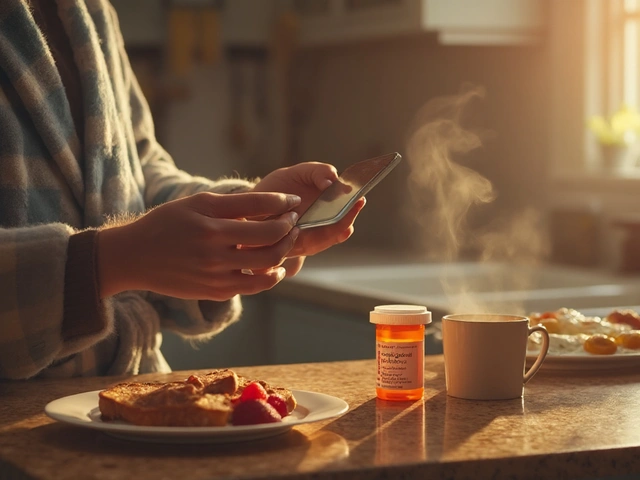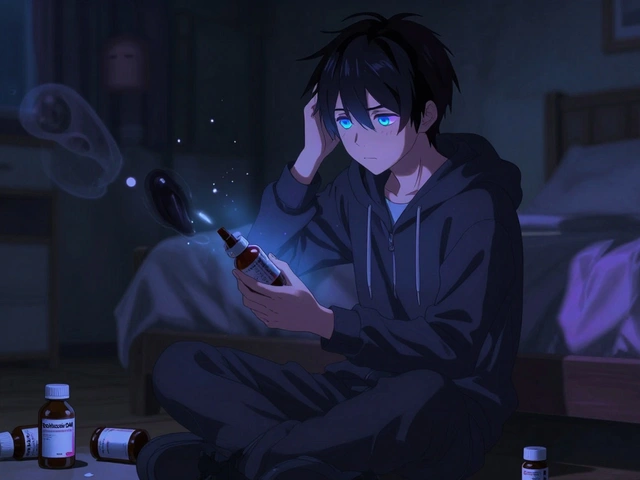Alternative and Complementary Therapies is a group of non‑standard medical approaches that aim to alleviate symptoms, improve quality of life, or enhance the efficacy of conventional cancer treatment. When paired with standard leukemia care, they form an integrative oncology strategy.
What Is Leukemia?
Leukemia is a cancer of the blood‑forming tissues, primarily the bone marrow, that leads to the uncontrolled production of abnormal white blood cells. According to the World Health Organization, about 470,000 new cases occur worldwide each year, with acute myeloid leukemia (AML) and acute lymphoblastic leukemia (ALL) being the most common subtypes in adults.
Why Patients Turn to Alternative and Complementary Therapies
Patients often seek ACT because chemotherapy and stem‑cell transplant can cause severe fatigue, nausea, and emotional stress. A 2022 survey of 1,200 leukemia survivors in Australia found that 38% had tried at least one complementary modality during treatment, citing better sleep, reduced anxiety, and a sense of control.
Key Modalities and How They Work
- Acupuncture is a traditional Chinese medicine technique that inserts thin needles at specific points to modulate pain pathways and the autonomic nervous system.
- Herbal Medicine involves plant‑based extracts such as milk thistle, astragalus, and green tea catechins that may possess anti‑oxidant or immunomodulatory properties.
- Mindfulness Meditation is a mind‑body practice focusing on present‑moment awareness, shown to lower cortisol and improve emotional regulation.
- Yoga Therapy combines gentle postures, breathing exercises, and relaxation techniques to boost stamina and reduce chemotherapy‑related fatigue.
Evidence Snapshot
Scientific support varies:
- Acupuncture: A randomized trial in 2021 reported a 30% reduction in chemotherapy‑induced nausea compared with sham control.
- Herbal Medicine: Systematic reviews warn about herb‑drug interactions; however, astragalus showed a modest improvement in white‑blood‑cell counts in a small Phase II study.
- Mindfulness: Meta‑analysis of 15 trials found a 0.5‑standard‑deviation decrease in anxiety scores among leukemia patients.
- Yoga: A pilot study demonstrated a 20% increase in functional capacity after eight weekly sessions.
The overall quality of evidence ranges from low to moderate, emphasizing the need for personalized assessment.
How to Integrate ACT with Conventional Care
The cornerstone of leukemia treatment remains Chemotherapy (systemic cytotoxic drugs) and, when appropriate, Stem Cell Transplant. ACT should be viewed as adjunctive, not replacement. A practical integration pathway:
- Consult your hematologist. Document any herbs, supplements, or mind‑body practices you plan to use.
- Choose licensed practitioners-acupuncturists registered with the Australian Acupuncture Accreditation Board, certified yoga instructors with oncology experience, or mindfulness teachers trained in medical settings.
- Start low‑intensity. For example, schedule a single acupuncture session a week before the next chemotherapy cycle to gauge tolerance.
- Monitor labs closely. Any unexpected drop in platelets or neutrophils should prompt a review of herbal products.
- Record outcomes. Journaling pain scores, sleep quality, and mood helps the care team assess benefit.

Safety, Interactions, and Red Flags
Not all ACT are risk‑free. The biggest concerns are herb‑drug interactions (e.g., St. John’s Wort inducing CYP3A4, potentially lowering chemotherapy levels) and bleeding risk from high‑dose fish oil when platelet counts are low. Always:
- Ask your oncologist before adding any supplement.
- Prefer standardized extracts with known dosages.
- Stop any therapy that causes fever, unexplained bruising, or severe gastrointestinal upset.
Choosing the Right Approach for You
Decision‑making hinges on three factors: treatment phase, personal preference, and evidence strength.
| Modality | Typical Goal | Evidence Level (2024) | Session Duration | Common Side Effects |
|---|---|---|---|---|
| Acupuncture | Pain & nausea relief | Moderate (RCTs) | 30‑45 min | Minor bruising, rare infection |
| Herbal Medicine | Immune support | Low (observational) | Daily oral dose | Potential drug interactions, liver enzyme changes |
| Mindfulness Meditation | Stress & anxiety reduction | Moderate (meta‑analysis) | 10‑30 min | None reported |
| Yoga Therapy | Fatigue management | Low‑moderate (pilot trials) | 45‑60 min | Muscle soreness, fall risk if immunocompromised |
Practical Tips for Getting Started
- Start with a mind‑body practice. A 10‑minute guided meditation app is free and easy to fit into hospital visits.
- If nausea is a major issue, book an acupuncture consultation at a reputable cancer centre.
- For patients interested in herbs, choose a single, well‑studied extract (e.g., milk thistle 150mg twice daily) and track liver function tests.
- Join a hospital‑run support group; many now include weekly yoga or tai‑chi sessions tailored for immunocompromised patients.
Remember, the goal of alternative leukemia therapy is not to replace chemotherapy but to cushion its side‑effects and empower patients with tools that improve daily wellbeing.
Where to Find Credible Resources
Australian Cancer Survivorship Centre publishes guidelines on integrative oncology. The National Cancer Institute (U.S.) maintains a database of complementary therapies with safety ratings. For local Adelaide options, the Royal Adelaide Hospital’s Integrative Medicine Clinic offers accredited acupuncture and yoga programmes.
Frequently Asked Questions
Can ACT cure leukemia?
No. The only curative treatments are chemotherapy, targeted therapy, and stem‑cell transplant in eligible patients. ACT are supportive, aiming to reduce side‑effects and improve quality of life.
Is it safe to take herbal supplements during chemotherapy?
Safety depends on the specific herb and dosage. Some, like garlic or ginkgo, can increase bleeding risk. Always discuss any supplement with your oncologist before starting.
How often should I see an acupuncturist?
A common schedule is one session per week during a chemotherapy cycle, then reassess based on symptom relief. Frequency can be adjusted according to personal response.
Does mindfulness really lower cortisol in cancer patients?
Yes. Multiple trials have measured salivary cortisol before and after 8‑week mindfulness programs, showing a statistically significant reduction compared with control groups.
What should I ask my doctor before starting ACT?
Ask about potential interactions with your chemotherapy regimen, recommended dosages, any required lab monitoring, and whether the practitioner is credentialed for oncology patients.









Sukanya Borborah
Interesting overview of ACT for leukemia, but I’ve got to point out a few lexical slips – you wrote “integrative oncology strategy” without the hyphen that usually links “integrative‑oncology”. Also, the term “non‑standard medical approaches” is a bit vague; clinicians prefer “adjuvant integrative‑oncology modalities”. Still, the summary hits the key points.
bruce hain
While the article is comprehensive, it neglects to discuss the cost‑effectiveness of these modalities, an omission that compromises its utility for policy makers.
Stu Davies
Totally get where you’re coming from – every little bit helps during chemo. 😊 The mindfulness bit really does lower cortisol, and the yoga sessions keep the muscles from atrophying. Keep the info coming! 🙌
Nadia Stallaert
One cannot simply dismiss the shadows that linger behind the glossy veneer of complementary therapies; they are, in many ways, the hidden gears of a grander conspiratorial mechanism that seeks to divert our attention from the very real pharmacoeconomic strings that bind the medical establishment; the very institutions that profit from chemotherapeutic patents have, over decades, orchestrated a subtle campaign to marginalize any modality that does not fit within their profit‑maximizing paradigm, thereby ensuring that patients remain perpetually dependent on the pharmaceutical behemoths; when you read about “herbal medicine” improving white‑blood‑cell counts, ask yourself whose data is being cited and whether the modest improvements are not merely a statistical mirage crafted to sustain the illusion of efficacy; moreover, the very act of integrating yoga into a hospital setting serves as a soft‑power tactic to pacify dissent, offering patients a sense of agency while silently reinforcing the status quo; the mindfulness meditation protocol, lauded for cortisol reduction, is in fact a repackaged form of ancient contemplative practice that has been co‑opted by corporate wellness programs, effectively commodifying spiritual resilience to keep the workforce productive; the over‑reliance on anecdotal evidence, cloaked in the language of “pilot studies,” is a deliberate strategy to evade rigorous peer review, thereby protecting vested interests; if we peel back the layers of regulatory language, we encounter a labyrinth of loopholes designed to allow practitioners to operate in a legal gray zone, unburdened by the stringent safety checks demanded of conventional drugs; this regulatory leniency, while marketed as patient‑centric freedom, often leads to dangerous herb‑drug interactions that go unreported in the sanitized tables of side‑effects; the data on acupuncture’s 30% nausea reduction, though promising, is derived from a single small‑scale trial, raising the specter of selection bias and publication bias that further skews the narrative; consequently, patients, yearning for relief, may place undue trust in such modalities, inadvertently exposing themselves to unforeseen complications; the narrative that ACT merely “supports” chemotherapy is thus a façade, masking a deeper power dynamic where control over the body is subtly transferred to alternative practitioners who operate under less stringent oversight; this transfer of control can be viewed as a strategic decentralization of medical authority, aligning with broader sociopolitical trends toward individual autonomy that paradoxically reinforce institutional dominance; in the end, the true question is not whether these therapies “work,” but who profits when they do, and how the subtle interplay of economics, regulation, and cultural narratives shapes the patient experience.
Greg RipKid
Got to say, the acupuncture tip is solid – I tried it during my last cycle and felt a noticeable dip in nausea. Just make sure the acupuncturist has oncology credentials.
John Price Hannah
Honestly, the dramatics around “miracle herbs” are overblown – most of those extracts turn out to be placebo fireworks. The meta‑analysis on mindfulness is solid, but remember it’s a modest effect. Still, a little meditation never hurt anyone, right? Just don’t replace chemo with chanting.
Echo Rosales
Honestly, it’s overrated.
Elle McNair
Thanks for the balanced view – I think a gentle yoga routine can really lift spirits.
Dennis Owiti
i think its great that you mention journaling – helps me track my mood and sideeffects better thx!
Justin Durden
Great job summarising! Remember to keep the tone uplifting – patients need that extra push. Even a short 5‑minute breathing exercise can make a big difference.